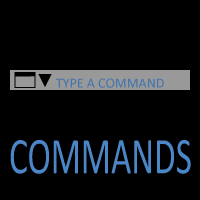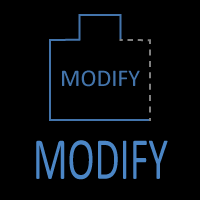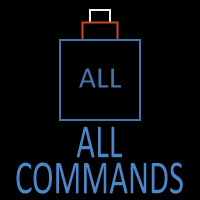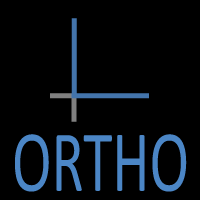Dynamic Input (Command / How-To Guide)
AutoCAD Dynamic Input Command Access
COMMAND LINE: F12
DEFAULT KEYBOARD SHORTCUT: F12
STATUS BAR: DYNAMIC INPUT

1. What Is Dynamic Input? (Quick Practical Overview)
Dynamic Input is a drafting aid that brings command prompts, distances, angles, and dimension information directly to your cursor. Instead of looking down at the Command Line, you can keep your focus where it belongs — on the drawing area itself.
When Dynamic Input is turned on, AutoCAD displays a small tooltip near your crosshair showing exactly what the command is asking for: length, angle, options, prompts, and more. You can type values right at the cursor, use Tab to switch between distance and angle fields, and use the arrow keys to cycle through available command options.
This page focuses on how to use Dynamic Input in real drafting situations. For the theory behind it — including why it exists and how it evolved — see our Concepts page here: /concepts/dynamic-input (click to read more).
2. Turning Dynamic Input On or Off
There are three common ways to toggle Dynamic Input:
2.1. Click the DYN Icon on the Status Bar
At the bottom of the AutoCAD window, the Dynamic Input button controls whether the system is active.
- Blue Highlighted Icon → Dynamic Input is ON
- Gray Icon → Dynamic Input is OFF
This is the easiest and fastest way to toggle it.
2.2. Press F12 on the Keyboard
F12 serves as the shortcut key to toggle Dynamic Input.
If you’re switching it on and off frequently during precision drafting, this is the method many users prefer.
2.3. Use the DSETTINGS Dialog
Open the Drafting Settings dialog: DSETTINGS → Dynamic Input tab
From here, you can enable or disable Dynamic Input and customize all of its sub-settings (covered in depth later in this on this page).

Screenshot showing how to toggle Dynamic Input using the DYN button in AutoCAD.
3. How Dynamic Input Behaves While You Are Drawing
Dynamic Input becomes immediately useful as soon as you start drawing a line, polyline, arc, or any geometry that asks for distance or angle.
3.1 Distance Input at the Cursor
Start the LINE command and click your first point.
You’ll see a distance field appear near your cursor showing the length of the line segment you’re creating.
You can:
- Move the mouse to draw freehand
- Type a number to specify an exact distance
- Use Enter to finalize the value
This is Direct Distance Entry, but with the added benefit of dynamic, on-screen feedback.
3.2 Angle Input at the Cursor
Press Tab and the angle field becomes active.
Type any value — for example 45 — and the next line segment will snap to that angle.
This makes angled drafting incredibly efficient.
3.3 Switching Between Distance and Angle with Tab
The Tab key alternates between the distance and angle fields. When you press Tab, the active field switches from distance to angle; pressing Tab again switches it back to distance. This predictable, two-field cycle allows you to move between them quickly and efficiently while drafting.
3.4 Using Arrow Keys to Preview Options
For some commands, arrow keys allow you to cycle through available options displayed at the cursor.
Example: When creating a rectangle, arrow keys may toggle between Area, Dimensions, Rotation, etc.
3.5 When Dynamic Input Temporarily Hides
Dynamic Input may briefly disappear while:
- Zooming
- Panning
- Orbiting
This is normal behavior. Dynamic Input will always reappear when AutoCAD returns to a state where it is ready for your next entry, ensuring that the interface stays responsive without interrupting your workflow.

Example of pointer input displaying distance and angle during line creation.
4. The Three Components of Dynamic Input
AutoCAD divides Dynamic Input into three functional areas, each designed to provide a different type of on-screen feedback. Once you understand what these components do and how they interact, you can customize Dynamic Input to match the drafting style and level of precision you need.
4.1 Pointer Input
This is the numerical input at the cursor.
It shows values such as:
- Distance
- Angle
- Coordinate positions
You can type right into these fields instead of using the Command Line.
4.2 Dimension Input
Dimension Input shows temporary measurements attached to your geometry while you draw.
For example:
- When drawing a line, the length appears next to the segment.
- When drawing a rectangle, the width and height will show next to each edge.
This gives instant visual feedback without adding permanent dimension objects.
4.3 Command Prompt Input
Instead of prompting you on the Command Line, prompts appear directly at your cursor, such as:
Specify next point or [Undo]:
This reduces eye movement and speeds up drafting.

Screenshot illustrating every Dynamic Input component active during drafting.
5. Dynamic Input Settings (DSETTINGS → Dynamic Input Tab)
Dynamic Input includes several customizable settings. You can turn features on or off depending on your preferences.
5.1 Dynamic Input Settings Overview
| Setting | What It Controls |
|---|---|
| Enable Pointer Input | Turns on distance/angle input at the cursor. Without this, Dynamic Input loses most functionality. |
| Enable Dimension Input | Shows temporary lengths/angles attached to geometry while drawing. |
| Enable Command Prompting | Displays command options next to the cursor instead of on the Command Line. |
| Show Command Prompt Tooltip | Enables on-screen prompts like “Specify next point.” |
| Show Additional Tips | Adds inline hints and option previews. Useful for beginners; many experts turn this off. |
| Show Input Field at Cursor | Controls whether the numerical fields appear directly at the crosshair. |
| Only Show with Commands | Prevents Dynamic Input from appearing when no command is running. |

Screenshot of the DSETTINGS Dynamic Input tab showing pointer, dimension, and command prompt options.
6. Tips for Using Dynamic Input Effectively
6.1 Use Tab to Switch Between Distance and Angle
The Tab key toggles the active Dynamic Input field, letting you move back and forth between entering distance and entering angle without ever looking away from the cursor. Once you become comfortable with this, it becomes an automatic part of your workflow that dramatically increases your speed and accuracy when creating precise geometry.
6.2 Use F12 to Toggle Dynamic Input Depending on the Task
Dynamic Input is extremely helpful when you need precise distance and angle entry, but there are times—especially during quick cleanup or bulk editing—when having the extra fields near your cursor may feel like visual clutter. Pressing F12 lets you toggle Dynamic Input on or off instantly so you can choose the drafting experience that fits the moment.
6.3 Combine Dynamic Input with Object Snaps for Accurate Geometry
Object Snaps ensure your points are anchored exactly where they need to be. When paired with Dynamic Input, you can snap to the correct starting point and then immediately type an exact distance or angle. These two systems complement each other perfectly and form one of the most reliable precision workflows in AutoCAD.
6.4 Disable “Additional Tips” to Reduce Visual Clutter
For large or busy drawings, the extra prompt bubbles provided by Additional Tips can be distracting. Turning them off keeps your Dynamic Input display clean and focused, showing you only the essential information you need while drafting. This will often make your workflow feel smoother and less overwhelming.
6.5 Use Angle Entry to Create Clean Construction Lines
Entering angles directly into Dynamic Input’s angle field is one of the fastest ways to create precise construction lines or temporary guides. Instead of relying on eyeballing or rough snapping, you simply type the angle you want and AutoCAD locks your line exactly where it should be.
6.6 Use Pointer Input to Enter Distances Without Using the Command Line
Pointer Input keeps your eyes at the crosshair by allowing you to type distances directly where your cursor is located. This eliminates unnecessary eye movement down to the Command Line and helps you maintain a smooth, uninterrupted drafting rhythm. It’s one of the simplest but most powerful benefits of Dynamic Input.
7. Dynamic Input Works Best with Other Precision Tools
7.1 ORTHO
ORTHO restricts cursor movement to horizontal and vertical directions. When combined with Dynamic Input, it gives you complete control over precise linear geometry.
7.2 Polar Tracking
Polar Tracking guides your cursor along preset angles and reinforces angle entry through Dynamic Input. This combination is ideal for any drawing that requires angled construction lines or geometric accuracy.
7.3 Object Snap Tracking
Object Snap Tracking helps you align with key points by projecting temporary alignment paths. Dynamic Input enhances these projections by letting you enter exact lengths or angles along those paths.
7.4 OSNAP
OSNAP ensures your start and end points are perfect. Dynamic Input then gives you precise control over everything in between. Together, they form the foundation of fast, accurate CAD drafting.
8. Common Problems and How to Fix Them
8.1 Dynamic Input isn’t showing at all
- Ensure DYN is enabled on the Status Bar
- Make sure “Pointer Input” is checked in DSETTINGS
8.2 I see the distance but not the angle
Press Tab.
If the angle still doesn’t appear, check “Enable Dimension Input.”
8.3 Values disappear when zooming
This is normal. Dynamic Input hides during heavy navigation and returns automatically.
8.4 Typing doesn’t enter values
Check that “Show Input Field at Cursor” is enabled.
8.5 The Dynamic Input tooltip is too small or too large
Adjust the UI Scale settings under: OPTIONS → Display → UI Scale
9. Related Commands and Tools
These drafting aids are often used together:
| Command / Tool | Description |
|---|---|
| ORTHO | Locks cursor movement to horizontal and vertical directions for precise linear drafting. |
| Polar Tracking | Guides cursor movement along preset angles, helping you draw angled lines accurately. |
| Object Snap Tracking | Projects temporary alignment paths from OSNAP points to help you line up new geometry. |
| OSNAP | Locks onto precise geometric points like endpoints, midpoints, and intersections. |
| Dynamic Input | Displays distances, angles, and command prompts at the cursor for more intuitive drafting. |
| Direct Distance Entry | Allows you to enter exact distances simply by moving the cursor in a direction and typing a value. |
10. Summary
Dynamic Input is one of AutoCAD’s most flexible and useful drafting aids. By keeping distances, angles, and prompts visible next to your cursor, it streamlines your workflow and eliminates unnecessary Command Line checking. When combined with OSNAP, Polar Tracking, and Object Snap Tracking, it forms a complete precision drafting system suitable for beginners and professionals alike.
Whether you turn it on or off during certain phases of your workflow, Dynamic Input offers tools that can dramatically improve your speed and accuracy. Learning to control it with F12, customize its settings, and use its distance and angle fields will make you a more efficient AutoCAD user.
11. FAQ — Dynamic Input
Make sure the DYN icon is turned on and that “Pointer Input” is checked in DSETTINGS.
Press Tab during distance input.
If it still doesn’t appear, enable “Dimension Input.”
This is normal behavior — it returns automatically when the command is ready for your next input.
Yes. Disable “Additional Tips” in DSETTINGS.
Yes — disable “Enable Command Prompting.”
You will still get distance/angle fields.
Tab is the built-in field toggle for Dynamic Input.
This cannot be remapped.
- Dynamic Input handles on-screen values and prompts.
- Polar Tracking manages directional movement.
- They work together but serve different functions.









